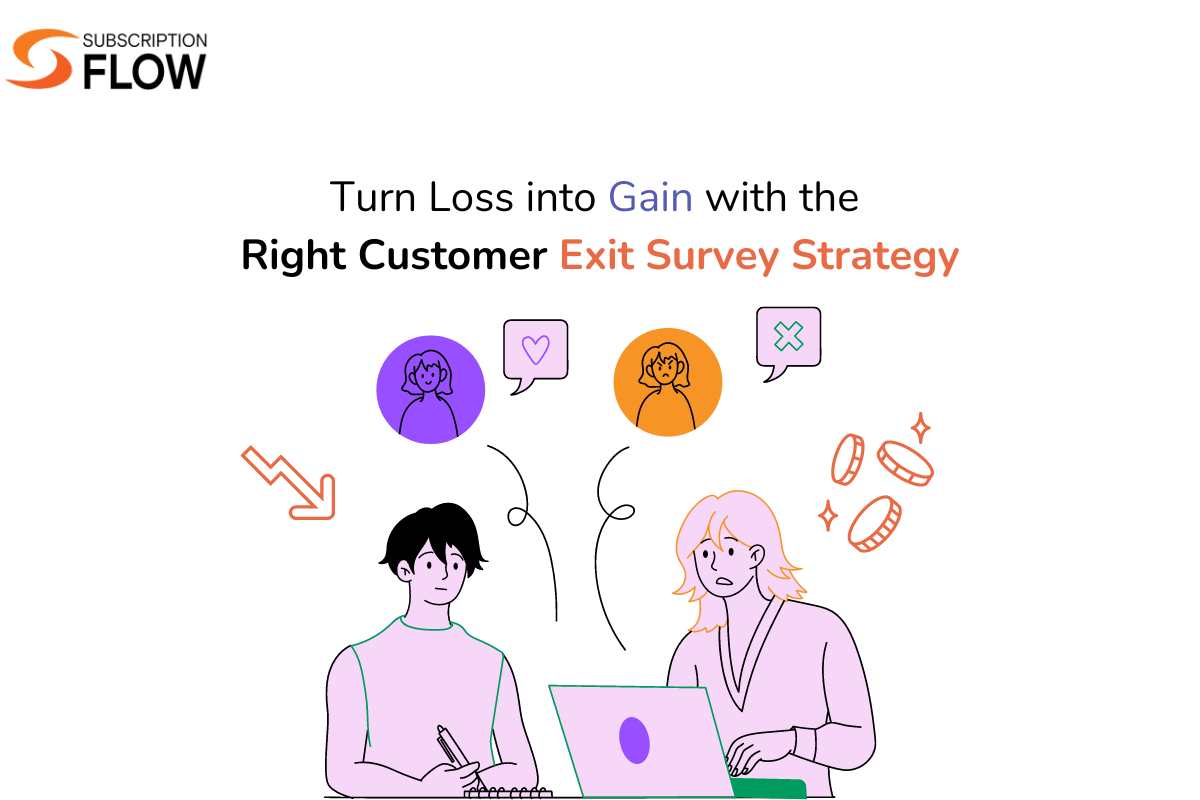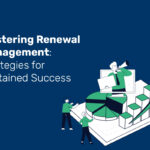
Turn Loss into Gain with the Right Customer Exit Survey Strategy
Losing customers is painful.
There are no two ways to feel about it.
However, this loss also presents a unique opportunity to drive business success through an effective customer exit survey strategy.
Exit surveys allow your business to access valuable feedback straight from the proverbial horse’s mouth.
After all, who better to critique your offering than the one who interacted with it, got to experience some of the biggest flaws and/or limitations up close, and decided to stop using it?
Customer feedback, when diligently collected and incorporated into the decision-making process, has the power to boost long-term growth and retention.
In this blog post, we discuss the importance of customer exit surveys and how to design the right exit survey for your business.
What is a Customer Exit Survey?
A customer exit survey is a tool used by businesses to gather feedback from customers who have recently ended their relationship with the company. It may be conducted during their cancellation or by reaching out after cancellation.
Exit surveys may be conducted through a pop-up for quick and rough data or through a detailed questionnaire administered via email, phone, or in-person (in the case of B2B businesses) for more qualitative data.
The goal is the same in either case i.e., to gather the maximum amount of information on the customer’s experience with the business and understand why the customer decided to leave.
Why is It Important to Conduct an Exit Survey?
Collecting data through exit surveys highlights areas for improvement and identifies specific pain points experienced by customers.
Leveraging this data allows you to revise pricing, amend policies, and improve features that might be holding you back from unlocking your true growth potential.
In this way, it addresses revenue leaks, deflects churn, enables product-led development, and has the potential to unlock scalable growth for your business.
At this point, you might be convinced to design one, but how to do it right?
Let’s explore some important considerations in designing your exit survey in a way that allows you to get the most value from it.
How to Design an Effective Exit Survey?
When designing an exit survey consider the following:
1. Zero in on what you want to learn
Before creating an exit survey, you need to clearly define your objectives and tailor your strategy to meet those goals.
The only way for exit surveys to work is if customers actually fill them out.
Customers that have decided to end their relationship with your business will not have unlimited patience in sharing the nitty gritty on every aspect of their experience.
This is why it is recommended to:
- Take a conservative approach to the questions you choose to ask.
- Keep your questions brief, clear, and focused on the customer experience.
- Multiple choice questions have better response rates.
- Avoid leading questions or biases like the plague as they sway the survey’s results in or against your favour and greatly limit its usefulness to your business.
Customer Exit Survey Questions:
Here are some examples of effective exit survey questions:
- What was the primary reason for leaving?
- What did you like about the product/service?
- Rate your experience with us on a scale of 1 to 10 (quantitative)
- How likely are you to recommend the product/service?
- What would have prevented you from leaving?
- Did the product/service deliver value for its price?
- How would you rate your customer support experience on a scale of 1 to 5?
2. Timing is everything
Timing is crucial when it comes to conducting an exit survey. You can choose to ask for feedback pre-cancellation or soon after.
Precancellation Survey
The benefit of opting for pre-cancellation feedback is that you can couple it with an effort to retain the customer through affiliate messaging or personalized offers.
Albeit a certain level of friction during the cancellation process is healthy and encouraged, taking this too far can prove to be detrimental. Customers might feel frustrated to be made to jump through hoops just to exercise their right to leave.
So, tread with caution.
The chances of getting feedback are also higher with pre-cancellation exit surveys as customers are already engaged with the product/service and in a familiar user interface. However, in-app surveys don’t do well in gathering qualitative data and come with their limitations.
Post cancellation Survey
When it comes to post-cancellation feedback, it is important to make sure you are reaching out within a time frame where the customers’ experience is still fresh in their minds.
Ideally, you should administer the survey immediately after the customer terminates their relationship with your business.
The longer you wait, the more likely the customer is to forget specific details or lose interest in the survey.
3. Choose the right platform
Selecting the right platform is critical when it comes to executing exit surveys the right way.
You can choose between:
- In-app cancellations
- Mobile or desktop cancellations
- In-person surveys
The choice of platform depends on the nature of your business and the type of relationship you had with the customer.
Some important tips and tricks include:
- Making sure the survey is user-friendly, mobile-responsive, and straightforward to complete.
- Splicing up more complex questions into bite-sized pieces with easy-to-navigate, next, back, and continue
- Visualizing form-filling progress to keep the customer around long enough to finish the exit survey.
4. Incentivize Your Customers and Appeal to Their Altruism
Appeal to churning customers by emphasizing that you wish to learn from them and not sell them something. This increases their willingness to offer their valuable feedback.
In the words of Robbie Kellman Baxter,
“You want to convey that you are interested in learning, not selling.”
Where altruism ends, increase your response rate by incentivizing your customers to complete the survey. Offer discounts, freebies, or other incentives that would appeal to them. The more value they see in completing the survey, the more likely they are to take the time to do it.
5. Analyze and act on the data:
Collecting data through exit surveys is the first step. The most crucial step is analyzing and acting on the data you’ve collected. Use the data to identify trends, areas for improvement, and best practices. Ensure that you communicate the results with your team and implement actionable solutions to address any issues raised.
Conclusion
In conclusion, exit surveys can provide valuable insights into your business’s performance, helping you improve customer retention and drive growth.
By following these tips in executing exit surveys the right way, you can collect accurate data that will guide you in making informed decisions to improve your business’s customer experience and drive growth.










